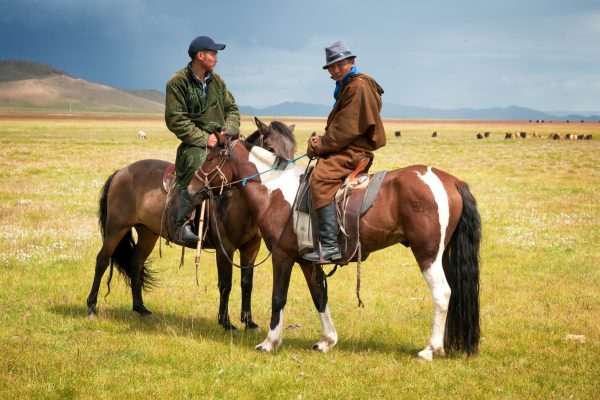
The expanding mining industry is a valuable economic driver in Mongolia’s economy. However, surprisingly little attention has been given to the detrimental social ramifications resulting from large-scale “land-grabs” needed for these industrial developments.
Land-grabbing is a term used to describe large scale acquisitions and enclosure of land, often for privatization. This practice has taken place across the world and is usually undertaken by transnational companies, government, or even individuals through the large-scale purchase of land.
In 2020, the United Nations special rapporteur on the rights of indigenous peoples highlighted how land-grabbing in Asia, for activities such as mining, is displacing indigenous peoples and destroying the environment. Indigenous and nomadic peoples are particularly vulnerable to this practice because they lack legal recognition in many parts of Asia and, therefore, their rights over land and resources are often violated. Land-grabbing is particularly harmful to women and persons with disabilities as they encounter the greatest challenges with relocation and continue to be discriminated against.
Land-grabbing for industrial projects leads to problematic human rights issues. Land is taken away from local communities, forced displacement often takes place, and access to safe drinking water is compromised. Land grabs for mining sites severely affect rivers due to the unsustainable rates of water extraction needed for the industry and the water contamination resulting from mining by-products. This all takes place in what is already one of the most water-insecure regions of the world.
Mongolia is Canada’s closest partner in Asia for strategic metals and mineral extraction. I attended the 2023 Canada Eurasia Chamber of Commerce (CECC) XII International Conference on mining in Central Asia earlier this year in downtown Vancouver. The conference was successful in bringing business leaders and policymakers together to discuss the opportunities of mining in Central Asia but missing was a discussion around the social and environmental consequences of establishing mining operations and what is being done to address these.
Government representatives from Mongolia were present at CECC conferences in Vancouver and Toronto earlier this year to discuss opportunities for expanding the national mining industry. Mining operations in Mongolia’s Gobi Desert have increased water insecurity for local herders. Mining is a water intensive activity which creates water shortage and restricts community access to safe drinking water, given that chemical pollution of waterways by mining operations has also been reported in Mongolia.
The Oyu Tolgoi copper and gold mine is Mongolia’s largest mining complex and is co-owned by Turquoise Hill, a Canadian subsidiary of Rio Tinto. The mine began construction in 2010 and, at the time, it was the world’s largest mining exploration project, with copper and gold ore deposits estimated to take up an area larger than the U.S. state of Florida. Herders spent years negotiating with the mine about rights over their traditional land, which had been enclosed and privatized for the purpose of building the mining site.
Furthermore, water stress is an ongoing concern for local herders as the scarce water resources available are being depleted by the mine. Mobile pastoralists of the South Gobi province wrote two letters of complaint in 2013 and 2014 to the compliance advisor ombudsman of the International Finance Corporation of the World Bank Group. They stated that the companies involved in the Oyu Tolgoi mining project were violating their rights to land and water. However, given the lack of legal recognition of nomadic herders as indigenous, the companies could argue that mobile herders couldn’t claim indigenous rights of access to land because they are not formally recognized as an indigenous ethnic minority, even though the herders themselves identify as such.
Nevertheless, and despite the numerous social and environmental impacts of mining activities in Mongolia, it would be unwise to argue in favor of a mining ban. Mining in Mongolia is well underway. The industry has gained support from the national government and a large proportion of the population. What is indispensable, however, is to emphasize that large-scale land grabs for industrial mining projects lead to problematic human rights issues. Herders, in particular, are disproportionately affected by these practices.
Ultimately, considerations about local people’s well-being should be at the forefront of all ongoing and new mining project development in Mongolia. Mining companies should respect herders’ rights to a clean and safe environment.
Land Grabs and the Cost of Mining in Mongolia
Source: Frappler

0 Comments